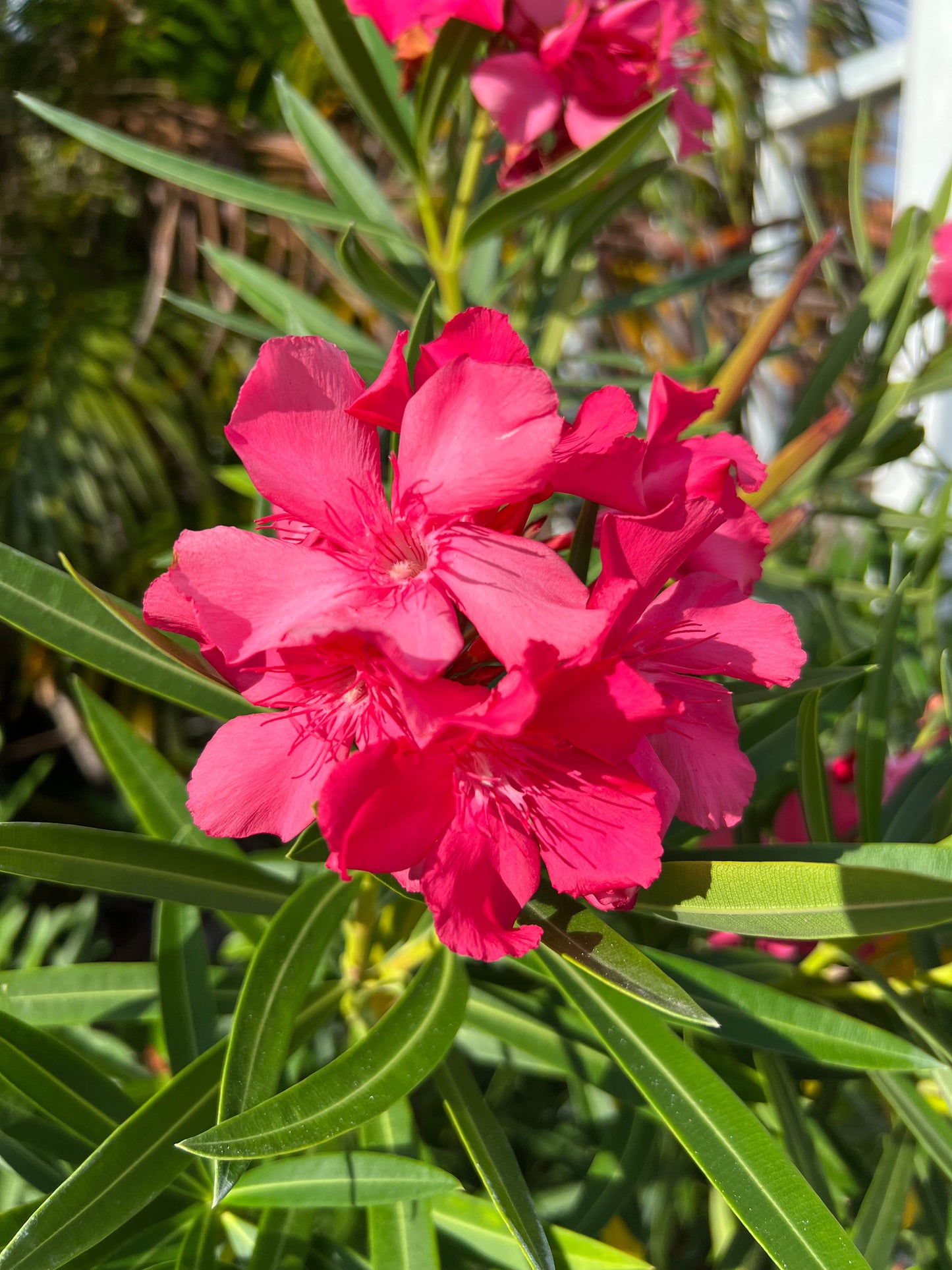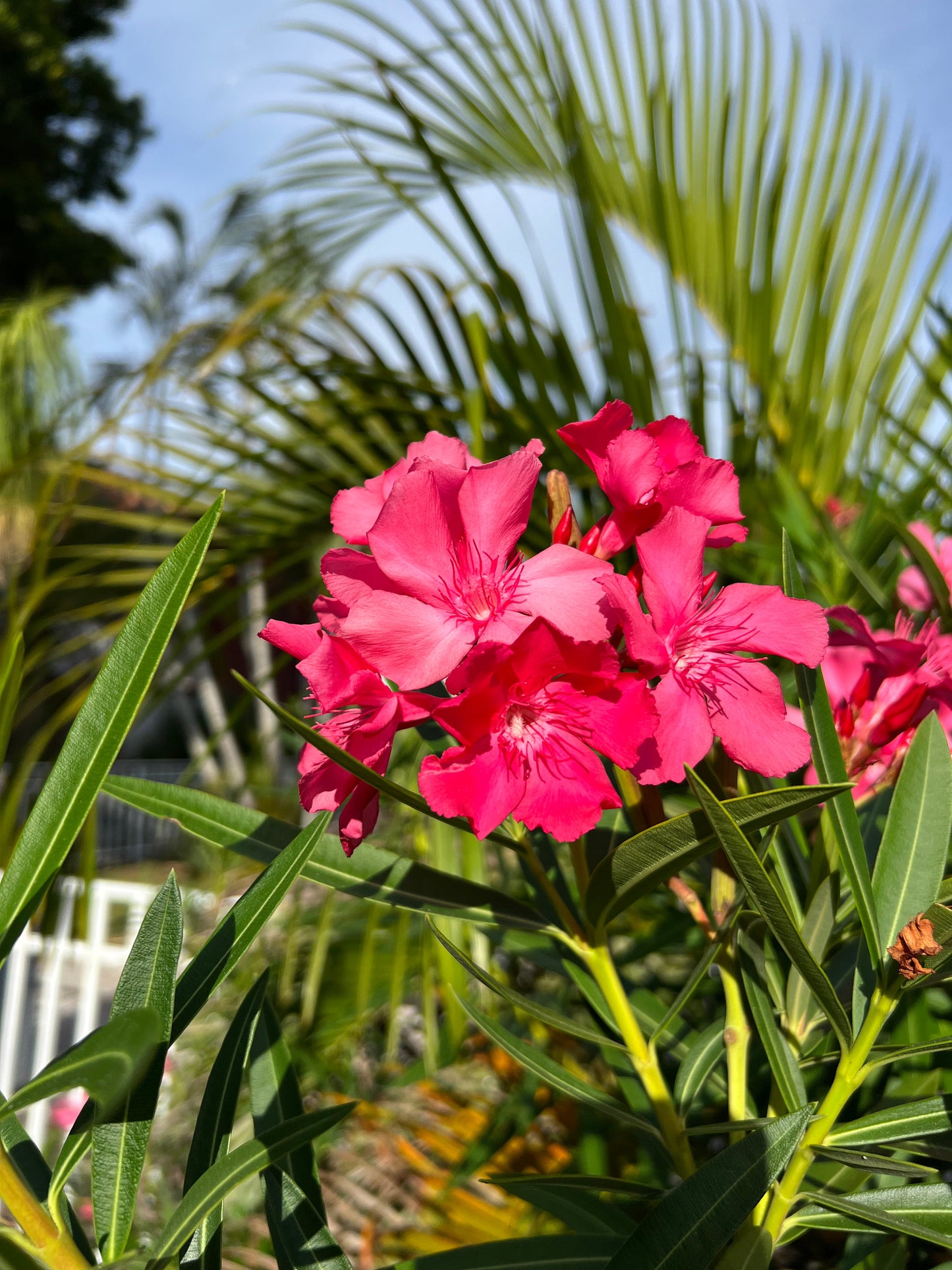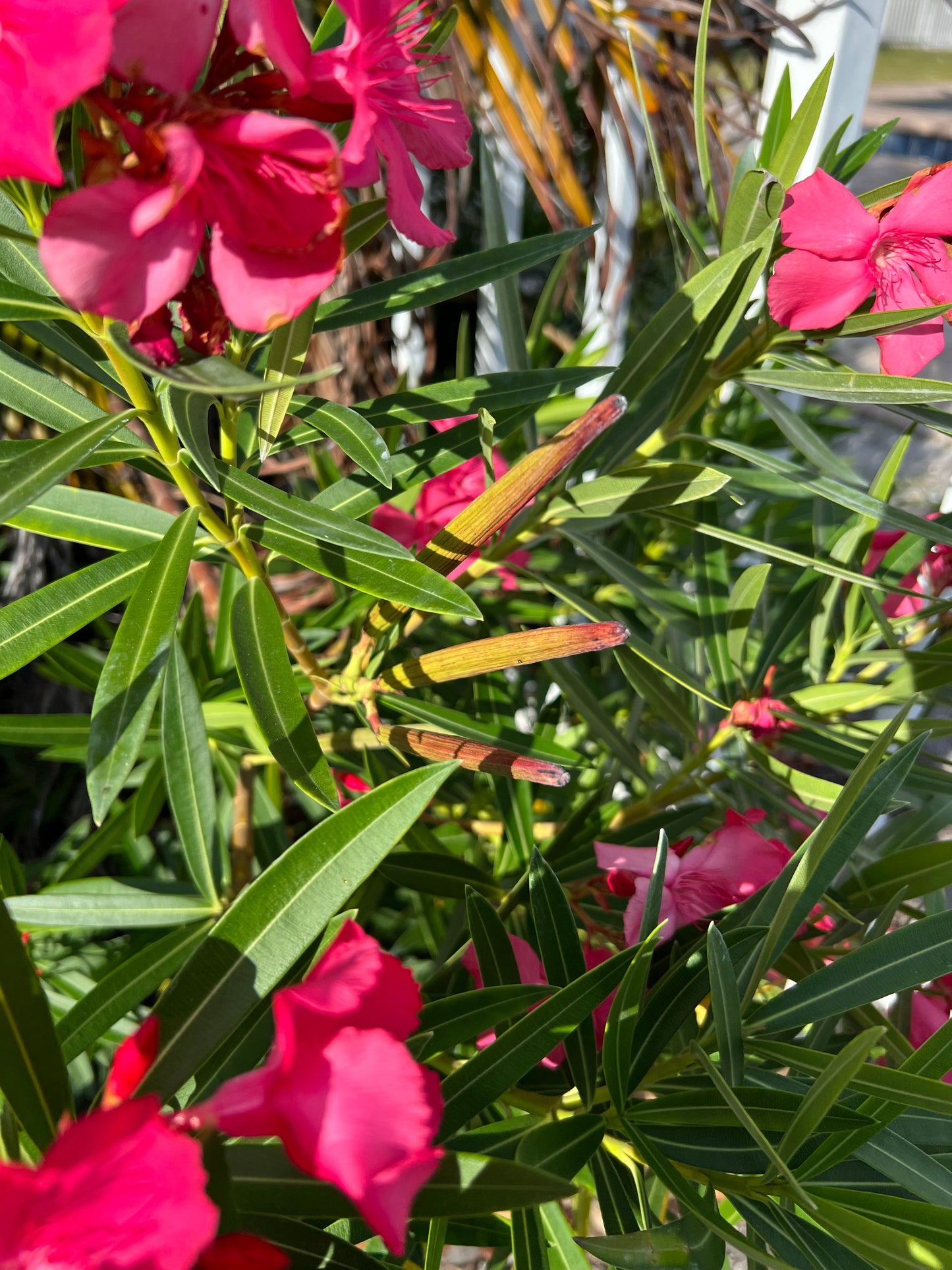Floridaseeds
Pink Oleander Nerium oleander 20 Seeds
Pink Oleander Nerium oleander 20 Seeds
Couldn't load pickup availability
Nerium oleander, commonly known as oleander, is a popular ornamental shrub or small tree that is native to the Mediterranean region and parts of Asia. It is known for its attractive evergreen foliage and showy, fragrant flowers. Hardy in zones 8-10. Here are some key characteristics and information about Nerium oleander:
Appearance: Oleander is a woody shrub or small tree that typically grows to a height of 6 to 20 feet (1.8 to 6 meters), depending on the variety and growing conditions. It has lance-shaped, leathery leaves that are arranged in whorls along the stems. The leaves are usually dark green, but there are variegated cultivars with white or yellow markings.
Flowers: Oleander is most renowned for its profuse, funnel-shaped flowers. These blooms come in a wide range of colors, including white, pink, red, salmon, and yellow. They are often sweetly scented and appear in clusters at the ends of branches. The flowers can measure 1 to 2 inches (2.5 to 5 cm) in diameter.
Toxicity: Oleander is considered highly toxic, as it contains compounds known as cardiac glycosides that can be lethal if ingested. All parts of the plant, including leaves, stems, and flowers, are toxic when consumed. It should be handled with care, especially in households with pets or small children.
Cultivation: Oleander is a hardy and drought-tolerant plant that prefers full sun and well-drained soil. It can thrive in a wide range of soil types and is often used in coastal regions because it can tolerate salty conditions. In colder climates, it is grown as a container plant and brought indoors during the winter.
Pruning: Regular pruning is often necessary to maintain the desired shape and size of oleander plants. Pruning should be done in late winter or early spring before new growth begins.
Propagation: Oleander can be propagated from stem cuttings. Select healthy, semi-hardwood cuttings and root them in a well-draining potting mix. The cuttings can be taken in late spring or early summer.
Pests and Diseases: Oleander is relatively resistant to most pests and diseases. However, it can sometimes be affected by aphids, scale insects, and caterpillars. Proper care and regular inspection can help prevent and manage these issues.
Landscape Use: Oleander is commonly used in landscaping as a hedge, screen, or specimen plant due to its attractive foliage and profusion of flowers. It is often seen in Mediterranean-style gardens and coastal landscapes.
Cultural Significance: Oleander has cultural significance in various parts of the world. It is often associated with Mediterranean and Middle Eastern landscapes and is mentioned in literature and art.
While oleander is a beautiful and hardy plant, its extreme toxicity makes it important to exercise caution when growing it, especially in areas with children and pets. It should never be ingested or used for medicinal purposes.
Growing Instructions
1. Prepare a mixture of half potting soil and half sand, perlite or vermiculite. Put the mixture in a pot with drainage holes in the base.
2. Water the mixture so that it is moist but not wet.
3. Put the seeds on the soil.
4. Cover the seeds with a thin layer of soil.
5. Water the seeds.
6. Place the pots in an area with warm temperatures in full sun or part shade.
7. Water them regularly so that the soil does not dry out.
8. When the seedlings are a few inches tall, they can be transplanted.










